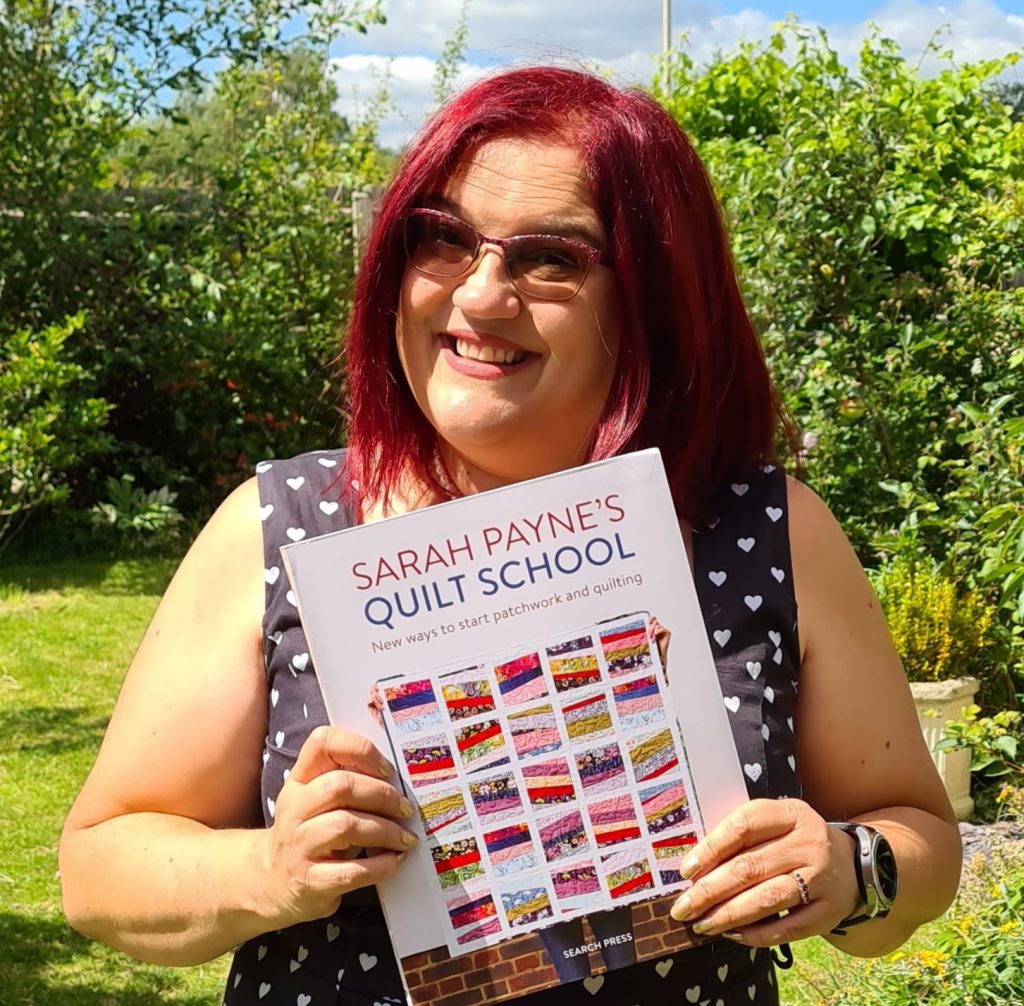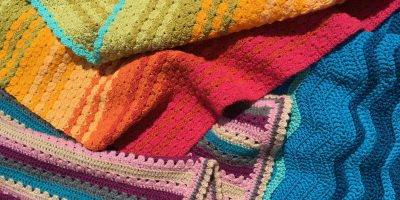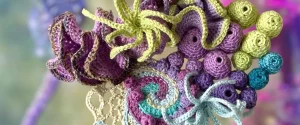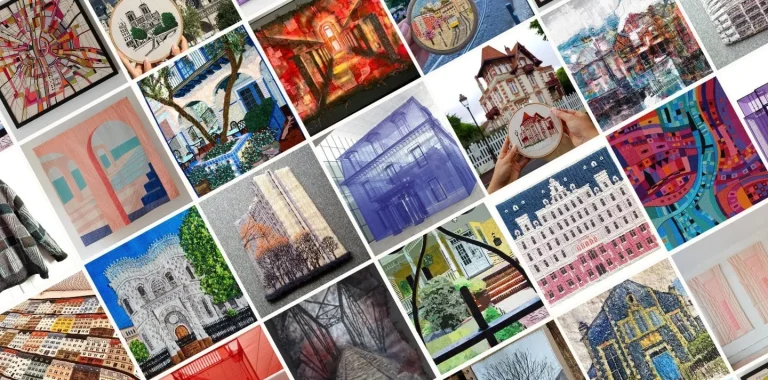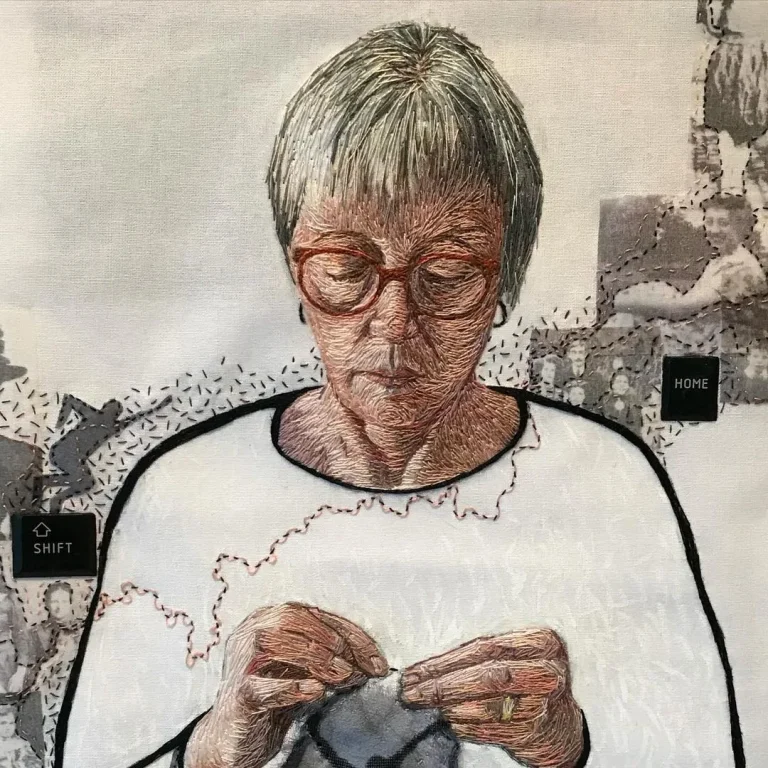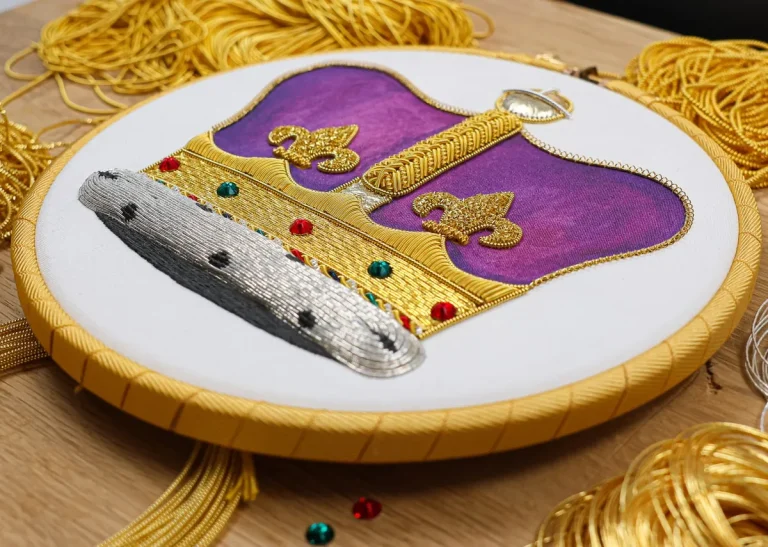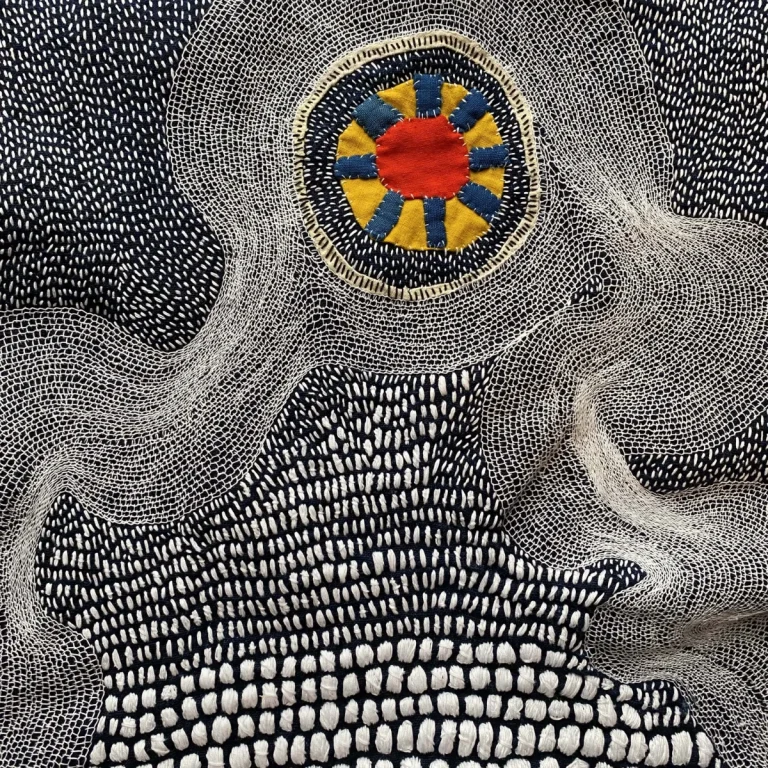Sarah Payne is the On Air TV Sewing demonstrator for the shopping channel Create and Craft TV. She is also an author, teacher, designer, and quilter.
After giving up her ‘tedious but lucrative career in IT’ in 2011 to pursue her crafty dreams, Sarah now designs her own fabrics range for Craft Cotton Company. She also writes for Search Press and is the brand ambassador for Oliso irons, Marathon Threads and Vlieseline.
Her work is extensive. Sarah lives to share her knowledge and aims to help people learn quilting by having plenty of fun! We caught up with Sarah to ask her about how she got into quilting and how she has shaped her career.

How and when did you start quilting?
I have been sewing forever! When I was a child I used to watch my mum make clothes. I was obsessed with the scraps. Plenty of Cindy dresses were sellotaped together in my house.
I fell in love with quilting about 20 years ago after watching American Quilting Queen Eleanor Burns on TV make her “Quilt in a Day”. I was hooked.
At the time my mum lived in Ireland and Eleanor was only available on TV over there, so Mum would video the shows and post the tapes to England so I could watch them. This was well before the days of YouTube! I loved it and I was hugely inspired to have a go and once I signed up for a workshop near my home I was hooked!
Excitingly, Eleanor Burns got to hear about this a few years ago and she sent me a personal message on Facebook – I had a complete Fan-Girl moment and then burst into tears. During my USA book tour in 2019 I met her in person at the Houston Quilt Festival – and ‘fan girled’ all over again. She was a darling and we even swapped signed copies of our books. That is still one of my career highlights!
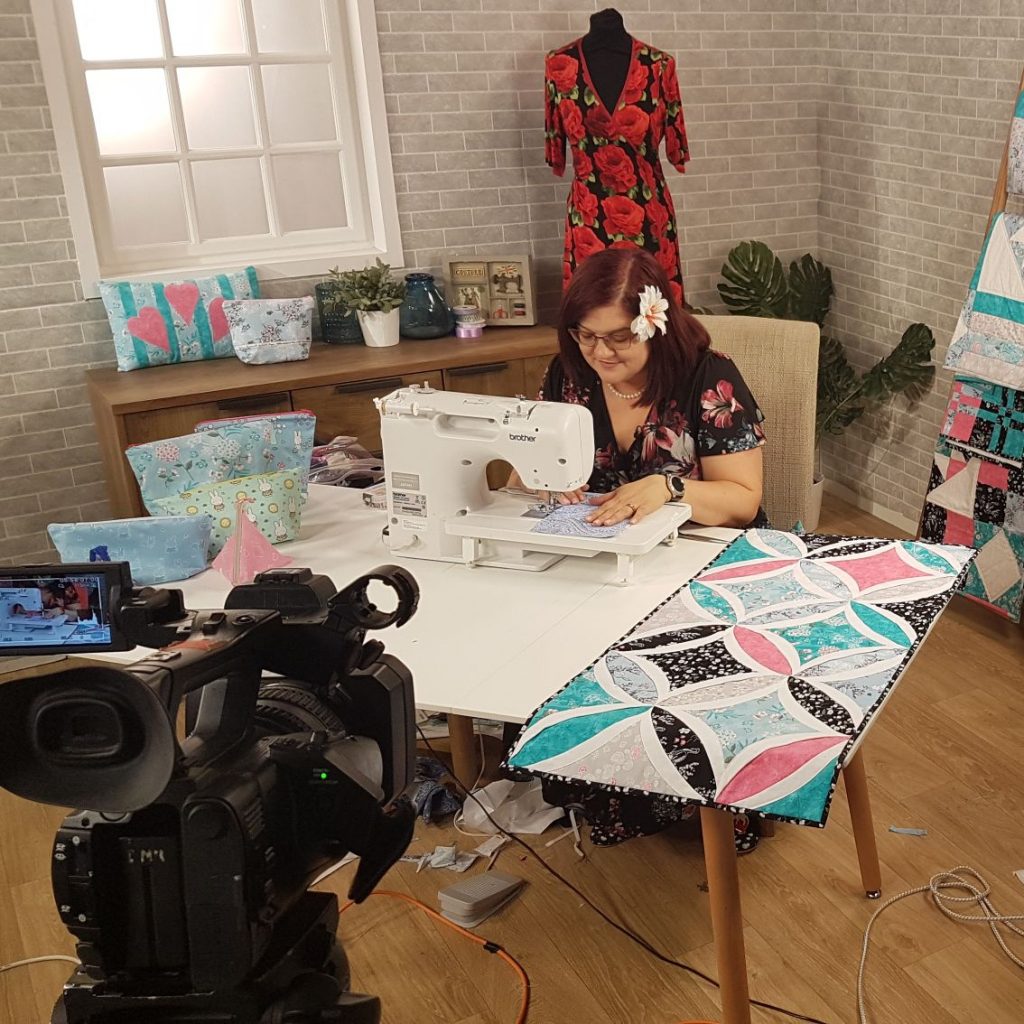
What are you currently working on?
At this very moment I am working on the design for my next quilt hamper. This is a subscription that I have offered for the last 2 years. So far, I have nearly 300 people stitching along.
The hamper goes out every 3 months and the contents of the hamper are a surprise for the recipient until it drops on their mat. The requirements for the hamper are very specific which makes the designing interesting. There is a budgetary constraint because all the hampers cost the same throughout the year, so the cost of the contents need to be relatively consistent. This means the fabric requirements need to be carefully controlled. There must be enough to allow for a little miss cutting, but not too much waste. The ethos behind the hampers is education so the design needs to be achievable for beginners whilst a little challenging, so they continue learning.
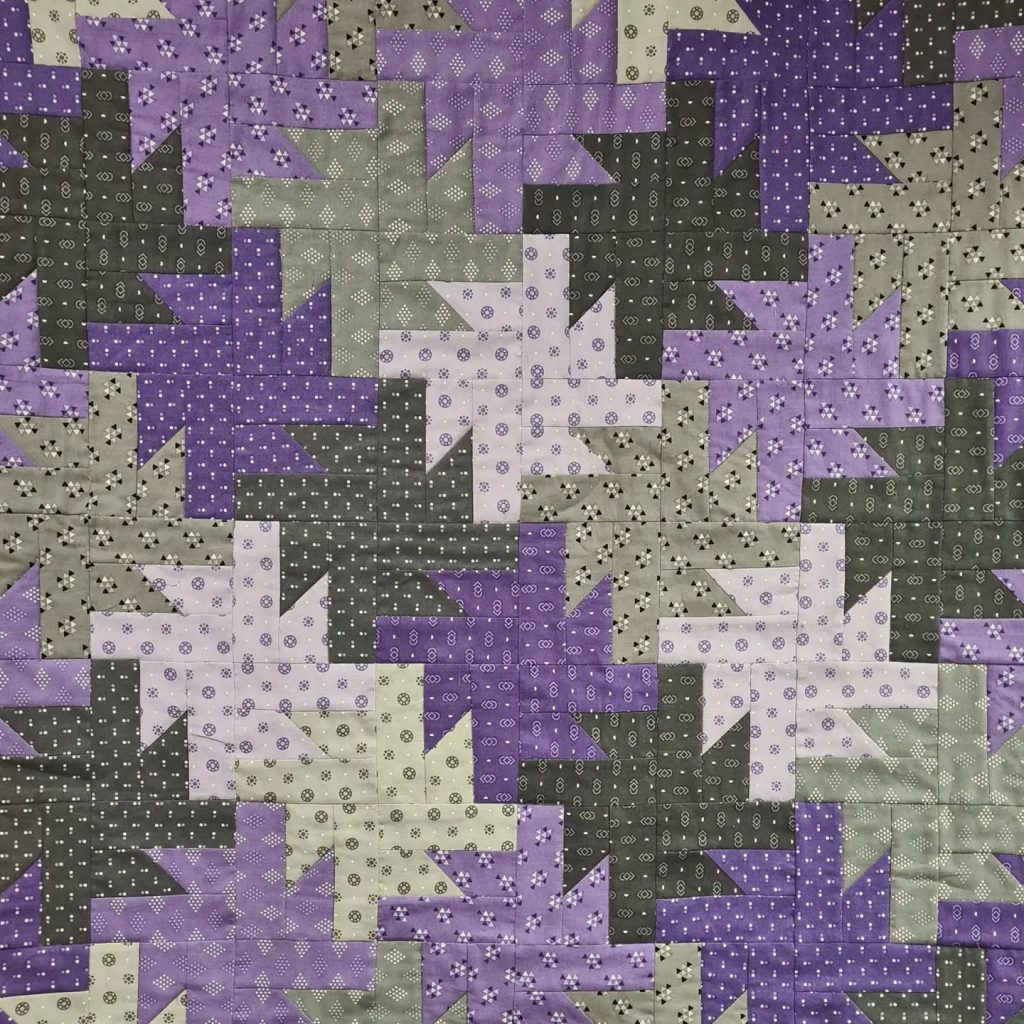
As a result, the patterns need to be very detailed which is time consuming from a writing and photography perspective. I now get the patterns professionally printed so the number of colour images can be greater than when I was printing them myself. The cost of ink was terrifying! Sometimes the educational element is a technique like y-shaped seams, a skill like working with bias edges, or a pattern like Dresden plate.
The pandemic has also led to fabric restrictions and at times I have had to do a complete kit redesign at the last minute because supplies have not arrived in time. I often include a ruler to use so need to be aware of repetition whilst not assuming everyone has had every hamper. I also need to work to a size because the wadding is pre-cut to cot size and so that needs to be considered too. Plus I cut and pack all the kits myself so I need to think about the logistics involved in the design.
Christmas 2020 contained 22 elements and I’m not doing that again. And all this needs to be considered before I have sewn a stitch. The designs themselves need to vary as I am very often designing to a brief. Briefs I have set myself.
Only then do I get out my copy of EQ8 on the computer and start playing around with designs. I find the software helps me with a rough calculation of fabric requirements and once I have uploaded my fabrics I can get a feel for how they work together. I usually end up with 4 or 5 designs that work with the educational theme and ruler so I need to decide on one. This usually comes down to the heart!
Then I cut the fabrics I think I need and start making. I sometimes have to restart a few times as the design changes and develops through the making stage. The original EQ8 design is rarely the finished version.
I love the process because it is challenging but also because I know that nearly 300 people are going to open their parcels and we get sewing together in a special Facebook group. The fruits of my labour become very visible, and I think there is no greater compliment than that to any designer or educator.
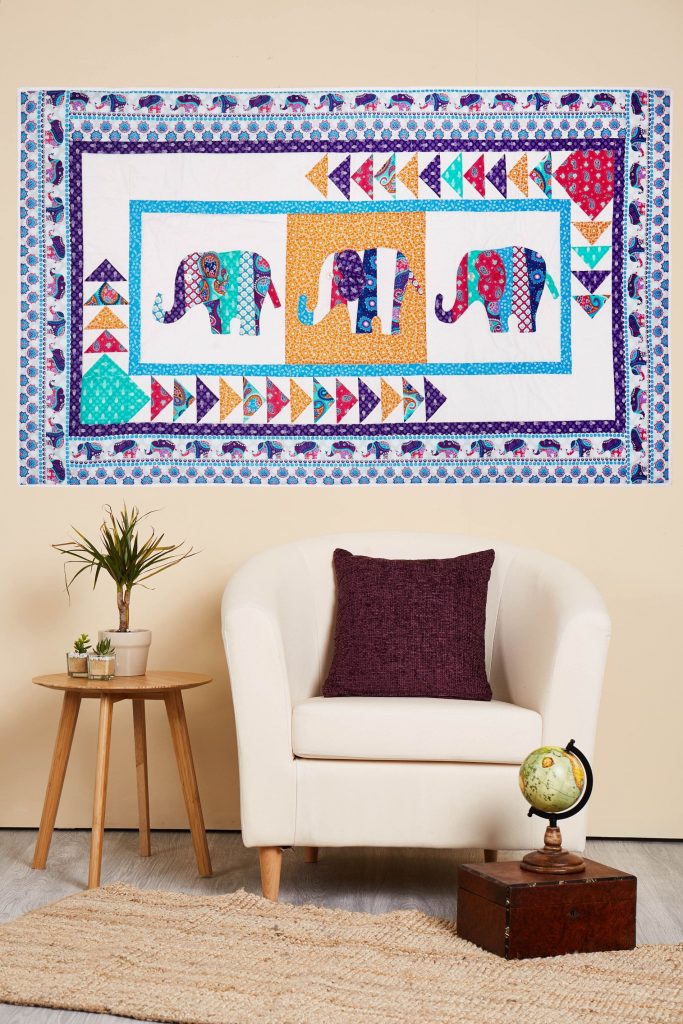
You do a lot of TV work for various channels – how easy was it to get into and also what does it feel like being behind the camera?
I was actually approached by the irrepressible Jennie Rayment in 2013. When I had my shop in Cambridgeshire she used to teach classes for me. She was doing some Create and Craft TV shows for Simplicity rulers but the travel to Peterborough from the south coast was challenging and she couldn’t keep up with the demand.
I resisted for a few months because while I was doing crafting on BBC radio Cambridge (yes – on the RADIO!). I wasn’t convinced that TV was for me. But no one ignores Jennie for long so eventually I went along for a screen test. It just flew by because they just wanted me to talk about quilts, which is pretty much my favourite thing to talk about. Before I knew it I was booked and getting prepped for TV.
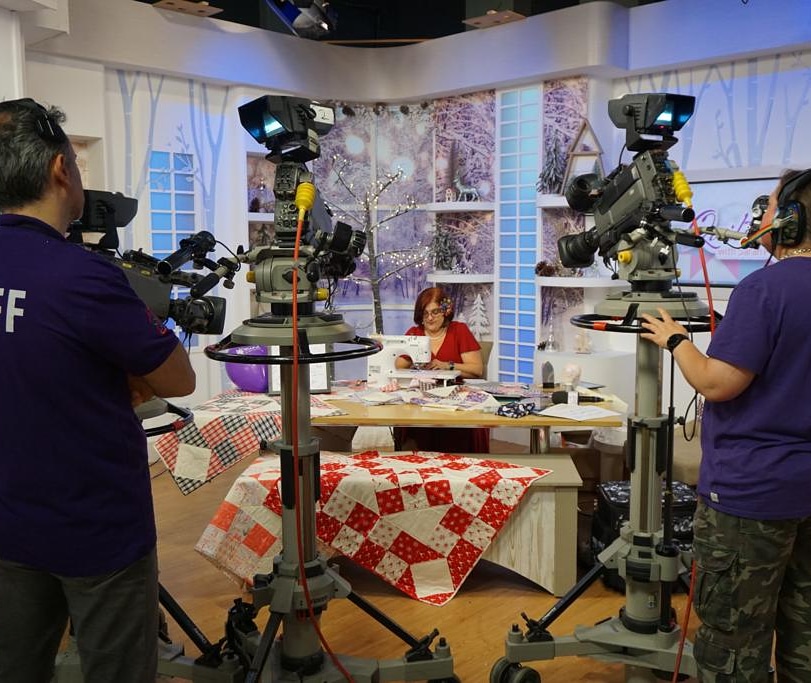
July 1st 2013 was my first sow with presenter Nigel May. He was a huge help with my nerves and the hour flew by. I very quickly learned not to shy away from a mistake on TV. If a needle breaks, show the viewer how to fix it. If you make a mistake and sew the zip in backwards (it does happen with all the distractions of live tv) just own your mistake and laugh about it. I have made every silly mistake imaginable over the years, but viewers do the same thing at home. I think it’s good to see that even the ‘experts’ muck it up at times.
The actual process of being on TV is not too harrowing. You are there with a presenter, so you are never alone. Then, it’s just you, the floor manager and a cameraman. Over the years they have become good friends. I don’t think of how many people are watching (in fact I have no idea of the audience size) so that doesn’t make me nervous. The time constraints can be challenging, both in the preparation time and the show time. There can be no extended deadlines because TV won’t wait. Now most of my shows are on Sunday mornings, and it isn’t unknown for me to have 4 or 5 shows in one day, all different, with the supplies arriving on a Friday. Therefore, the sewing machine has to hum all day and night before it’s 4.30am on Sunday and time to get up and go to the studios. It’s why I tend to sleep in on a Monday.
I have to say, TV isn’t as glamorous as you might think. One of the most common questions I get is “do you get your hair and makeup done for you?” No is the answer to that. But we do have a dressing room with lights around them like in the movies so there is a little sprinkle of stardust there!
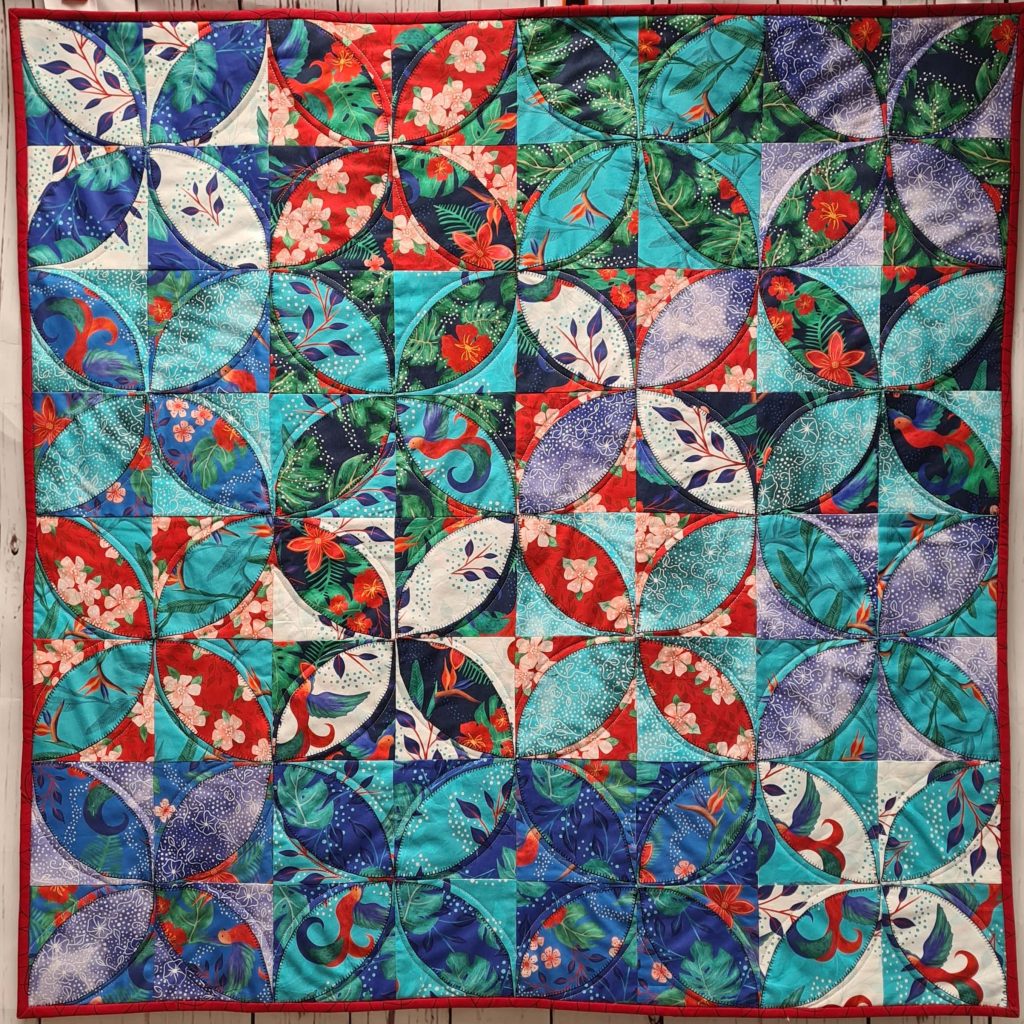
As someone who designs projects for magazines, how do you go about finding inspiration for the pieces you’re commissioned to design?
Designing for TV is different to designing for magazines and for workshops. For TV, it is down to a love of fabrics, and that is often my starting point for a design. Once I have the fabric, I am looking at the scale of the print, the direction of the design and what the project is for. Usually it is for TV, so the size of the TV studio is an important aspect. There’s no point creating a king size bed quilt if I am in one of the smaller studios. You’ll only get to see about 1m of the piece. Then it is about working on a design that shows the fabric off to its very best, but to strict deadlines. Often it is about keeping the design simple to showcase the fabric.
If it is a workshop design, then it is about coming up with a project that is achievable. It has to fit the class timeframe and be easy for them to finish later at home. All of my face-to-face workshops come with full instructions so that attendees can feel supported after the event and create something beautiful that they can be proud of.

If I am designing for a magazine I usually have more of a free reign. I used to regularly write and design for Quilt Now – sadly a victim of the recent economic downturn – and I would sometimes be given a theme to follow but the rest was up to me. Then I would make what was swimming around my head at that time. I get my inspiration all over the place. It might be some tiles in a restaurant bathroom, or something I see on my quilty travels.
Quilting has taken me to USA, India and teaching for a charity called Quilts for Kids in Kathmandu in Nepal over the past few years so there are plenty of sources to draw on.
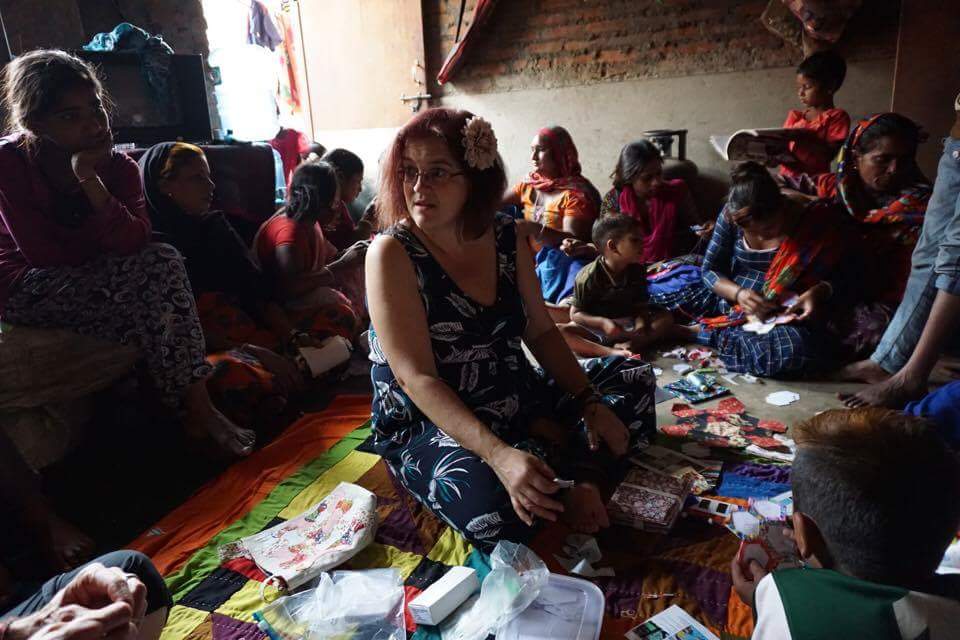
How has the pandemic affected you over the last year – nightmare or revelation?
It has been a game of 2 halves really. At the beginning I was doing about 30 Create and Craft shows a month. When the pandemic hit that dropped to 2 shows in 2 months. You can imagine my panic.
The fabric company I work with shut down immediately and there wasn’t a sewing machine in sight. My trip to the Indian Quilt Festival in 2021 was cancelled and I found it hard to adjust. For the last few years, I have concentrated on the TV working pretty much 7 days a week. So, to suddenly have time felt strange and uncomfortable. The drop in income was a bit of a shock too, so I started focusing on what I could do from home. I increased the subscription membership and began investigating other ways of getting my work out there.
I focused a lot on social media and my Facebook page. I’ve created a fun and educational space with live demos and chats which give me a social outlet where I can share my quilt loves with others who share my passion and want to learn. It certainly gives me a boost too.
I had been doing retreats with my friend Rachel Pierman for her company Crafty Monkies. We put our heads together as both of our business models had collapsed and as self-employed people we were not entitled initially to any kind of financial help. So, we decided to offer zoom workshops through her company. This took off over night and we were very quickly full. Now she offers a huge range of classes from world renown teachers offering classes from beading to bag making, dressmaking to quilting. I also started building my kit business and I do regular sales through Facebook.
Last August I moved into outside premises it had outgrown my house, and I expect to move into a bigger unit late spring. I am again bursting at the seams.
The pandemic has allowed me the space to work out what I really love to do – designing and teaching – and the room to focus on it. I still do lots of tv shows to keep my face out there. This leads to other opportunities, but now I can take the time to embrace them.
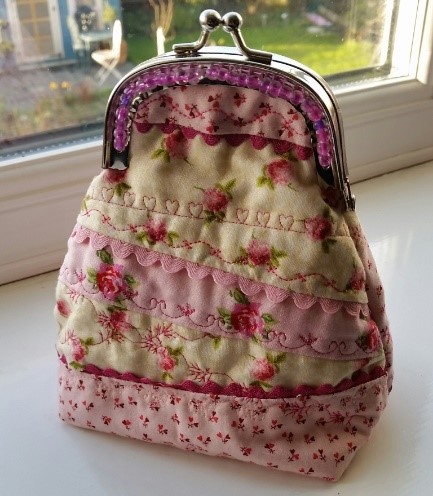
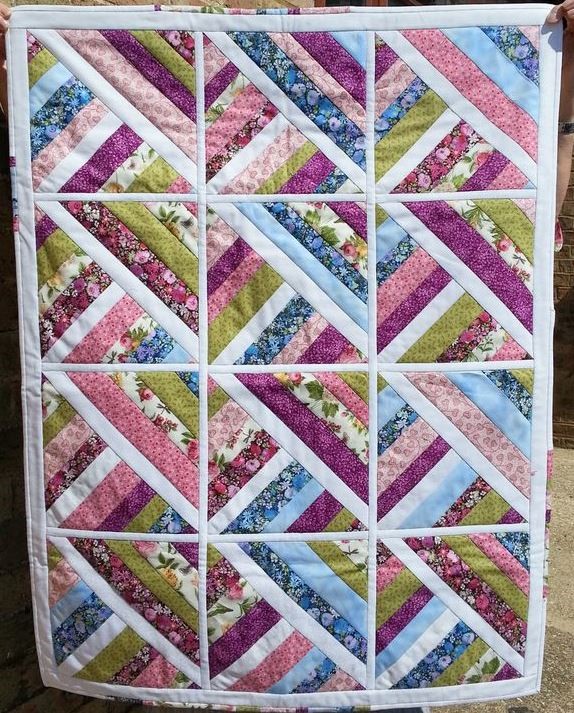
What is next? Do you have exhibitions or new books underway that you could tell us a little about?
As usual it is busy here in my studio. The publication of my second book – Sarah Payne’s Applique School – has been delayed by the pandemic because we couldn’t do the photography as planned at the end of last year, but it was eventually completed in April and will be available early summer 2022.
My first book “Sarah Payne’s Quilt School” won a Highly Commended award from the British Sewing Awards. The award was for “Favourite sewing book of 2019/20. I couldn’t believe it – it is such a huge honour! It was also Search Press’s fastest selling book in their 50 years history (launching on TV certainly helps sales!). My book has a lot to live up to.
The first book is about teaching beginners to quilt through manageable steps. The second book takes a similar approach with applique so I am excited to see how that is received. I have also been busy with making samples for my 3rd fabric range which launched in April. It is called “Birds of Paradise” and is based on my original artwork. It is by Craft Cotton Company and will soon be available on TV, at Hobbycraft and John Lewis, as well as in many of your high street independent sewing stores. I get a huge buzz every time I see another pattern, fabric design or kit go out the door. It never gets old and I can’t imagine doing anything else.
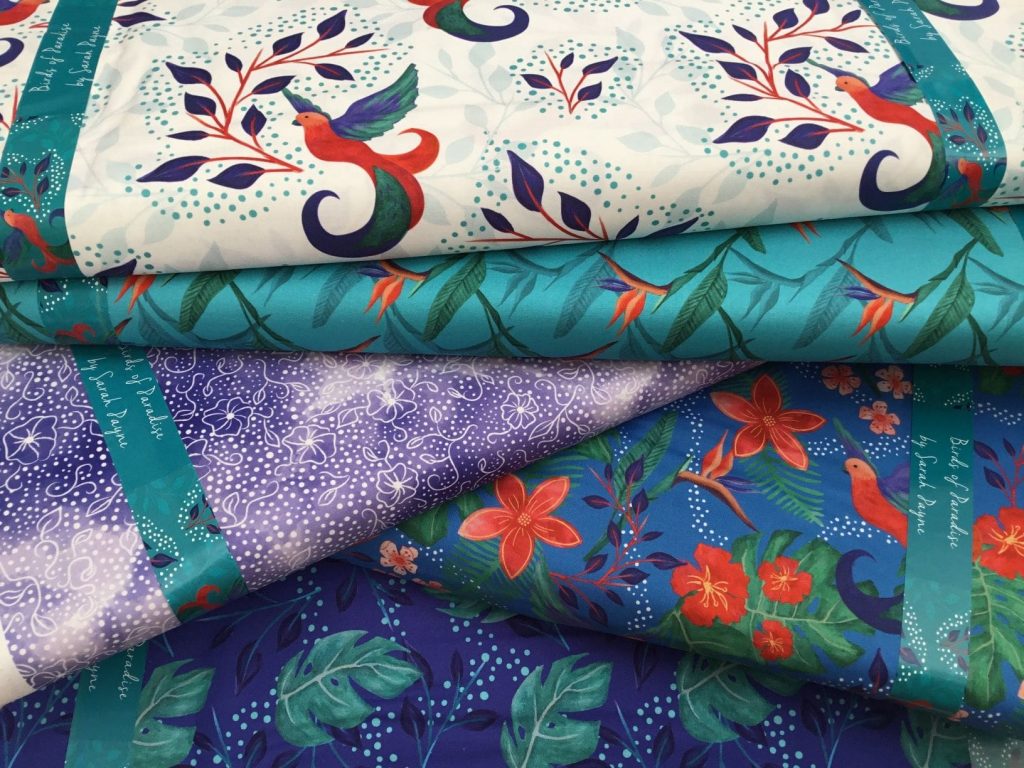
Learn more about Sarah Payne. Visit her website or her blog, or follow her on Facebook, Twitter, or Instagram.
You can also read about Teaching in Kathmandu – Quilts for Kids


